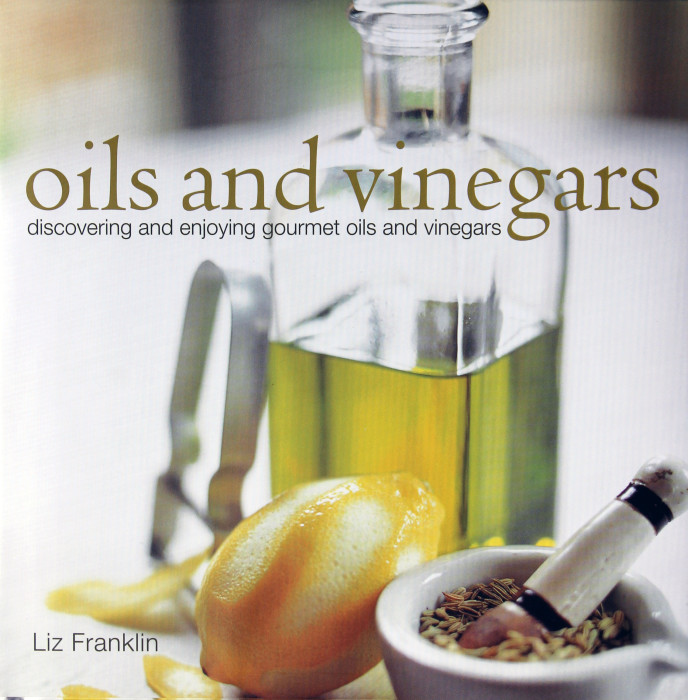There are times when you can be overwhelmed walking down a food or beverage aisle. Wine stores are obvious candidates. So many pretty labels, so many grape varietals. The only hope I have is that sign on the top shelf announcing “this is Italy.”
I have the same issue in a supermarket when I wander down the aisle devoted to oils and vinegars. Again, there is a swarm of labels with language I don’t understand. What is a single estate olive oil and is it worth a price premium?
Liz Franklin has traveled the Mediterranean extensively and actually studied olive oil at the University of Perugia right in the heart of the olive oil world: Italy. In her carefully written volume Oils and Vinegars, Liz explains a cuisine world — thousands of years old — in language that mere mortals can understand.
The book is composed of sections explaining individual types of oils and vinegars accompanied by recipes that show that ingredient at its sparkling best.
She begins, of course, with extra virgin olive oil. How do you read that label, what are the grades, how to do you store, how do oils from Italy and France and Spain and other producers compare? Just as there are wine tastings, you can find olive oil tastings where the same level of sensory complexity is explored. Olive oils can convey a wide array of flavors and textures that will affect how you can best employ them in your kitchen.
Liz presents a lovely first recipe to explore the power of olive oil: Rosemary and Potato Tart with Olive Oil Pastry. And now you’ll know how that pastry can vary depending on the particular olive you select.
Argan is a Mediterranean fruit that, with massive hand labor, is transformed by Berber women into a reddish oil with nutty aroma. You can put it to use in, what else, an authentic Lamb and Butternut Squash Tangine. If argans are not familiar to you or cannot secure argan oil, you may have more success with avocado oil and you’ll find a lovely use for it here: Avocado Oil, Lemon and Pistachio Cake
Walnut, hazelnut, sesame, and even pumpkin oils are described, discussed, and suggested for your tasting. Thinking ahead to Thanksgiving, you might consider serving a Roasted Butternut Squash and Pancetta Salad with Pumpkin Oil.
Literally, “vinegar” means “sour wine” and vinegars have been employed for over 10,000 years. The grand dame of vinegars is, of course, Balsamic and Liz gives a brief but detailed survey of the vinegar pride and techniques employed in Emilia Romagna since the 11th century. How does Liz showcase Balsamic vinegar? A pork fillet is cooked with cheese and olive oil, paired with potatoes mashed in mustard and olive oil, and then sided with onions fried in Balsamic vinegar. It’s a pungent exploration of tanginess.
Beyond Balsamic, Liz explores vincotto, sherry vinegars, red and white vinegars, and the rice vinegars of Asia. Rice vinegars are used twice in Spicy Beef Brochettes with Cucumber and Pineapple Salsa.
Finally, Liz gives you the opportunity to create your own vinegars at home with ideas for flavored vinegars: raspberry and thyme, blackberry, mango, rosemary and lemon. You’ll be inspired by this sampling and challenged to craft your own combinations.
If you take a little time and browse through Oils and Vinegars, you’ll find yourself reading those labels on the oil and vinegar bottles. You’ll pause, you’ll select, and your cooking will be enhanced with dash and depth.

